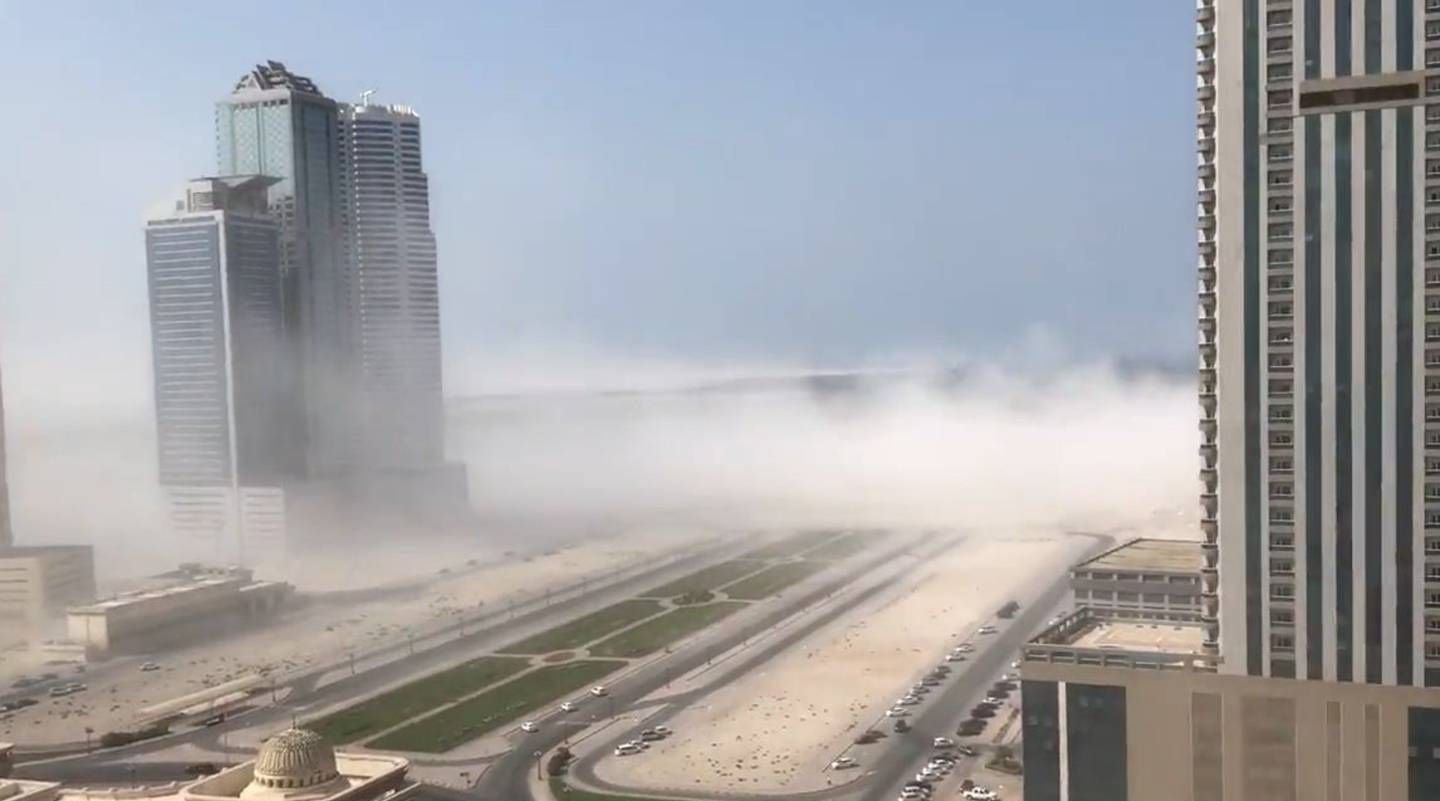Sandstorms are common in the UAE, reducing air quality and obstructing road vision.
Dust and sand storms are expected to hit the UAE this week, according to the National Centre of Meteorology.
According to the Plume air quality app, which monitors cities across the world, this might result in "high" pollution levels.
It advised that babies and vulnerable adults stay indoors.
In the UAE, Plume occasionally reports "airpocalyptic" levels of pollution, which means that everyone is exposed to quick and severe consequences. This most recently occurred last week.
Sandstorms: How common are they?
Sandstorms are not uncommon in the United Arab Emirates. They are especially common in the summer and during periods of turbulence, such as the transition from winter to spring, when rising temperatures generate high winds. Storm frequency is anticipated to rise as a result of climate change, according to a 2017 assessment.
Extreme sandstorms are more common elsewhere in the region, in places like Saudi Arabia, Kuwait, and Iraq, where strong north-westerly winds prevail.
Concentrations of nitrogen dioxide, sulphur dioxide, and carbon monoxide – all pollutants emitted by cars – decreased by as much as 70% during the early days of the Covid-19 outbreak.
However, a recent study in the UAE indicated that the air was becoming more polluted due to an increase in micro particulate matter concentrations in the air in the east of the Arabian Peninsula, including the UAE.
What do sandstorms consist of?
A great deal more than sand, storms can transport pollution, viruses, and germs.
"You may have a sandstorm here, and the impact on what is transported on the sand or in the sand is completely different," said Ruqaya Mohamed, department manager of air quality, noise, and climate change at the Environment Agency Abu Dhabi.
"The sandstorm could have the same origin, but depending on where it passes, it brings all sorts of things along the route by the time it reaches your or my location," she explained.
Viruses, bacteria, dust mites, fungi, and even plants are commonly found in sandstorms. Meningitis spores have been blamed on them for spreading over Africa. Storms can also spread diseases like influenza, according to scientists.
According to some scientists, the 2001 foot and mouth outbreak in the UK was caused by a huge storm in North Africa that brought the spores to the UK's north a week before the first cases were detected.
Who is in danger of getting ill?
Sand particles can be breathed, but they are normally too big to be deposited in the lungs, thus they become caught in the upper airway, according to the American Thoracic Society.
As a result, the most common health issue is upper airway and mucus membrane irritation.
People with allergies or asthma suffer the most. Even a fifteen-minute exposure to tiny particles can raise the risk of developing asthma symptoms.
Anyone with a compromised immune system, such as the elderly or pregnant women, is more susceptible to infection from dust-borne viruses or bacteria.
In a sandstorm, what should I do?
If possible, stay inside until the storm passes. If not, use a mask or a moist cloth to keep dust particles from entering your lungs.
Indoors, using an air purifier can assist. Staying hydrated is also vital, according to doctors.
Why don't UAE sandstorms resemble those seen on television?
The UAE's position and climate protect it from the harsh winds that might be experienced elsewhere.
Most storms that reach the UAE originate in the driest marshlands of Kuwait or Iraq, according to forecasters, but they usually blow out before they reach the UAE.
The sand is suspended instead of a fast-moving wall of air, as shown in the Hollywood film Mission Impossible: Ghost Protocol.
Is there anything that can be done to improve the UAE's air quality?
Abu Dhabi has increased the scope of a programme aimed at improving the emirate's air quality.
The World Health Organization's Global Air Pollution and Health Technical Advisory Group have welcomed experts from the environment department. They are now members of two working groups, one on dust, sand, and health, and the other on policy measures.
The expertise collected in the groups is supposed to assist the emirate in continuing to improve air quality.
 AR
AR UR
UR
